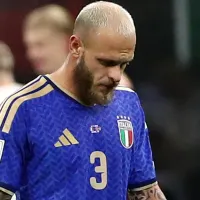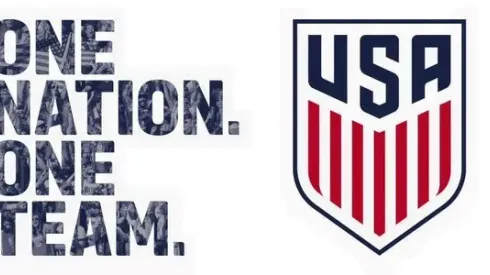Sunil Gulati is entering perhaps the most critical three-week period of his tenure as US Soccer Federation (USSF) President today. Gulati, who has served since 2006 as the leader of the governing body for the sport in the United States, faces three separate and distinct challenges he must navigate through.
1- US Women’s Equal Pay
The ongoing controversy over a new collective bargaining agreement (CBA) for the US Women’s National Team (USWNT) hit a new level of national conversation Sunday with the airing of a feature on the CBS news magazine 60 Minutes.
At issue is why exactly the World Champion USWNT is making far less money than their male counterparts who have not advanced past the Round of 16 of a World Cup since 2002. The USWNT, led by captain Carli Lloyd, have publicly demanded nothing less than equal pay.
Defenders of the USSF stance will point to TV ratings and revenue generation as a defense. However, that ignores the reality that the USWNT are a side that adds value to major international women’s soccer tournaments, while the US men benefit off an existing infrastructure for the game to which they contribute little in the way of global interest or revenue.
It can also be argued that the US men are marketed to a broader audience than women, with the USSF wrapping the men in jingoistic terms and the American flag while the USWNT are marketed to a niche audience by comparison. The US women have argued this point repeatedly that the men are given favorable treatment by the USSF not just in terms of pay but in the areas of marketing and exposure as well.
Wherever you come down on the equal pay dispute, the 60 Minutes segment has thrown this topic to the top of the list of pressing concerns for US Soccer. While many of the top soccer writers in the US remain focused on discussions related to the next two points we will cover, the mainstream sporting and news media have picked up on the USWNT story, ensuring it will have plenty of oxygen for the foreseeable future.
2- NASL vs USL for D2 sanctioning
The Soccerwarz have intensified in the last month with the defection of two leading NASL clubs, the Tampa Bay Rowdies and Ottawa Fury FC, to the rival USL. NASL is currently sanctioned as a Division 2 men’s league while USL is sanctioned as a Division 3 men’s league. The USL has formally applied for Division 2 status. And with 31 teams currently in tow for next season, they appear on the surface to be healthier than the NASL which will likely be a 10-team league next season. However, NASL boasts, among other clubs, the world-famous New York Cosmos, giving the league a star power and claim to higher division status that USL lacks. US Soccer has a Board of Governors meeting scheduled for the weekend of MLS Cup (December 8-10) where the sanctioning issue might be determined.
President Gulati has attempted to forge a compromise or consensus by meeting with leaders of both leagues and facilitating conversations about sanctioning. Gulati tweeted on November 3 that he had productive meetings with both leagues.
The USL season begins in March 2017, and the NASL season begins in April 2017. Both leagues are in a certain degree of limbo in terms of marketing and compiling plans for 2017 while this situation remains unresolved. It is noteworthy that under US Soccer bylaws, multiple D2 men’s leagues can be sanctioned. However SI.com’s Brian Strauss has reported that the USSF would be reluctant to set this precedent of sanctioning two D2 men’s leagues concurrently.
Gulati has proactively sought to resolve this crisis but his efforts now might be overcome by other events related to the women’s and men’s national teams.
3- Jurgen Klinsmann
Many fans of the US Men’s National Team (USMNT) often forget the USSF is the governing body for the sport at all levels in this country, not simply the administrators for the men’s national team program. As detailed above, US Soccer President Sunil Gulati has serious and pressing matters to deal with on other fronts. But for USMNT fans the continued bewildering form of the team and strange coaching decisions by Jurgen Klinsmann are weighing heavy.
The United States had a historically bad week during the international break, recording the first home World Cup qualifying loss to Mexico since 1972. And with a 4-0 loss in San Jose to Costa Rica, the USMNT recorded its worst loss in any World Cup qualifier since 1957. These results are not completely out of context when you consider that the US lost its first-ever CONCACAF Gold Cup match to a Caribbean nation last year when eliminated by Jamaica in the semifinals and could not even muster a shot in the 4-0 loss to Argentina in the Copa America semifinals.
But Klinsmann is Gulati’s man – the US Soccer President spent five years pursuing the former German World Cup winner and has seemed reluctant to part company with him. Klinsmann had vowed to make the USMNT a consistent top 10-15 international side but the results since 2014 are not just poor for this era – they are historically bad with even prominent media members now mocking the US head coach.
Gulati’s legacy with many fans is tied to the Klinsmann hire. This pulls at the emotions of the US Soccer President who might be better served historically to let Klinsmann try and right the ship. But the very real possibility that the USMNT could miss a World Cup for the first time since 1986 looms as the team sits dead last in the six-team hexagonal, which is the final stage of CONCACAF World Cup qualifying.
These three issues all will test the leadership ability of Sunil Gulati who must answer to a wide array of constituencies in his role as President of US Soccer. How Gulati manages each and every one of these issues will factor into his legacy and the long-term governance of the game in this country.















